Md Imrul Hasan
Low Complexity Iterative 2D DOA Estimation in MIMO Systems
Mar 15, 2023Abstract:Multiple-input multiple-output (MIMO) systems play an essential role in direction-of-arrival (DOA) estimation. A large number of antennas used in a MIMO system imposes a huge complexity burden on the popular DOA estimation algorithms, such as MUSIC and ESPRIT due to the implementation of eigenvalue decomposition. This renders those algorithms impractical in applications requiring quick DOA estimation. Consequently, we theoretically derive several useful noise subspace vectors when the number of signal sources is less than the number of elements in both the transmitter and receiver sides. Those noise subspace vectors are then utilized to formulate a 2D-constrained minimization problem, solved iteratively to obtain the DOAs of all the sources in a scene. The convergence of the proposed iterative algorithm has been mathematically as well as numerically demonstrated. Depending on the number of iterations, our algorithm can provide significant complexity gain over the existing high-resolution 2D DOA estimation algorithms in MIMO systems, such as MUSIC, while exhibiting comparable performance for a moderate to high signal-to-noise ratio (SNR).
Robust 2-D DOA Estimation in a Polarization Sensitive Single User Environment
Mar 14, 2022



Abstract:Apart from the conventional parameters (such as signal-to-noise ratio, array geometry and size, sample size), several other factors (e.g. alignment of the antenna elements, polarization parameters) influence the performance of direction of arrival (DOA) estimating algorithms. When all the antenna elements are identically aligned, the polarization parameters do not affect the steering vectors, which is the underlying assumption of all the conventional DOA algorithms. Unfortunately, in this case, for a given set of DOA angles there exists a range of polarization parameters which could result in a very low signal-to-noise ratio (SNR) across all the antenna elements in the array. To avoid this type of catastrophic event, different antenna element needs to be aligned differently. However, this fact will make almost all commonly used DOA estimation algorithms non-operable, since the steering vectors are contaminated by the polarization parameters. To the best of our knowledge, no work in the literature addresses this issue even for a single user environment. In this paper, that line of inquiry is pursued. We consider a circular array with the minimum number of antenna elements and propose an antenna alignment scheme to ensure that at any given point no more than one element will suffer from significantly low SNR due to the contribution of polarization. A low complexity algorithm that estimates the DOA angles in a closed-form manner is developed. We treat MUSIC as the baseline algorithm and demonstrate how it can reliably operate in all possible DOA and polarization environments. Finally, a thorough performance and complexity analysis are illustrated for the above two algorithms.
Performance of Large Aperture UCCA Arrays in a 5G User Dense Network
Mar 04, 2022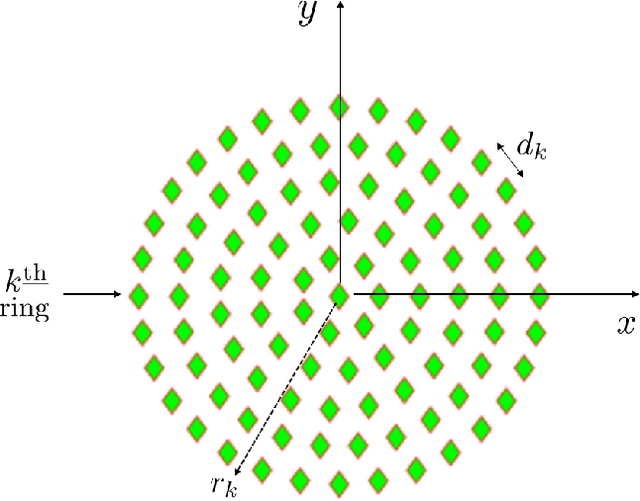
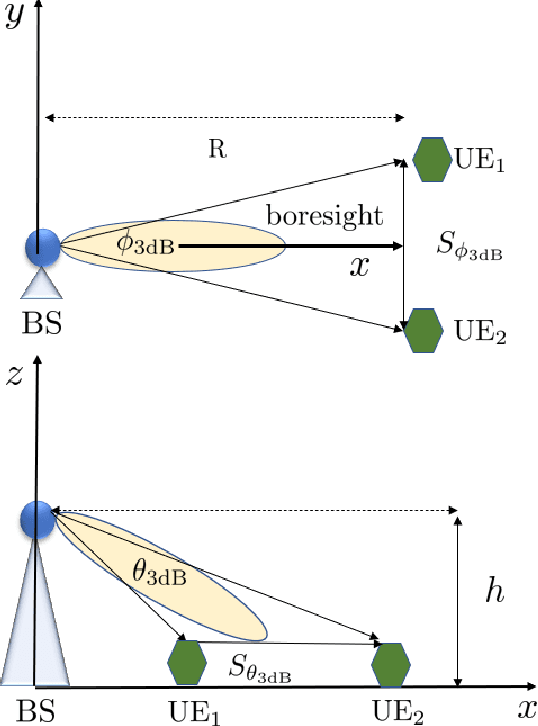
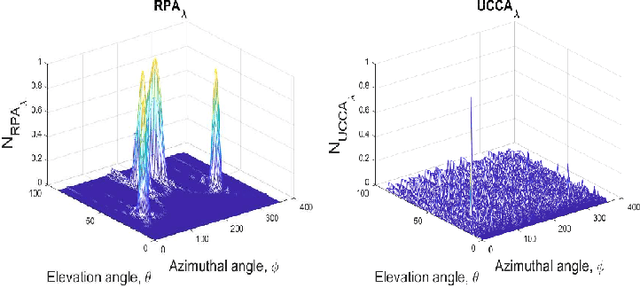
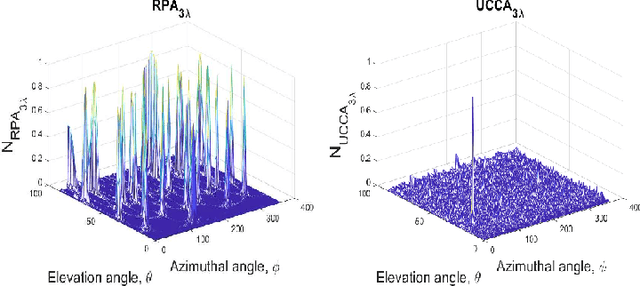
Abstract:The transmitted signals in the fifth generation (5G) wireless networks suffer from significant path loss due to the use of higher frequencies in Sub-6 GHz and millimeter-wave (mmWave) bands. Inter-user interference in an ultra-dense network offers additional challenges to provide a high data rate. Therefore, it is desirable to generate narrow beams to extend the coverage of a 5G network by increasing antenna gain and improve its capacity by reducing the inter-user interference. This fact leads us to address the use of large aperture uniform concentric circular antenna (UCCA) arrays for 5G beamforming in massive multiple-input-multiple-output (MIMO) technology. Our analysis demonstrates that a UCCA with a larger antenna element spacing is capable of generating a significantly narrower beam with a moderate side-lobe level than a rectangular planar antenna (RPA) array while operating with the same number of antenna elements. This capability of the UCCA is analyzed to discover the performance gain of a 5G network.
Low Complexity Single Source DOA Estimation Based on Reduced Dimension SVR
Oct 19, 2021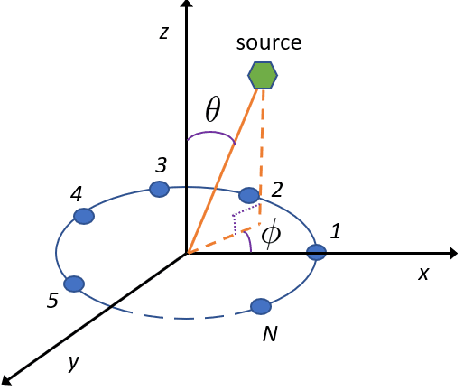
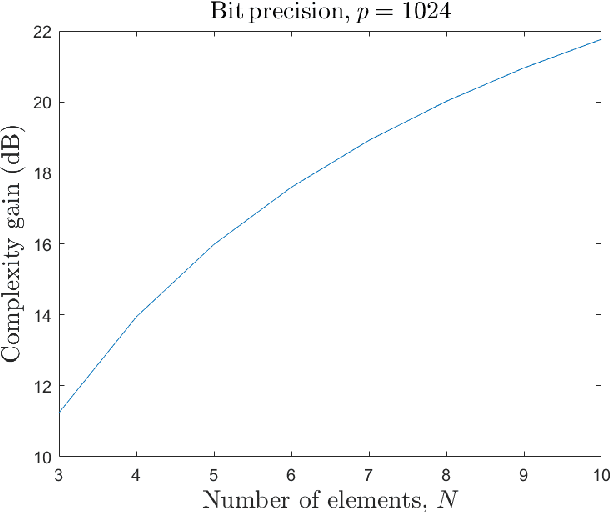
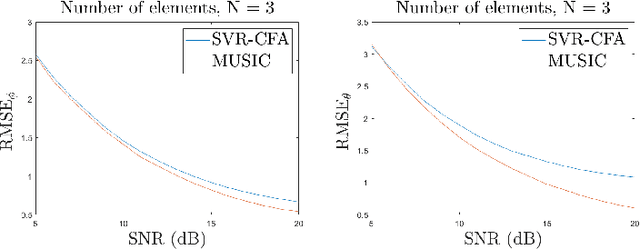
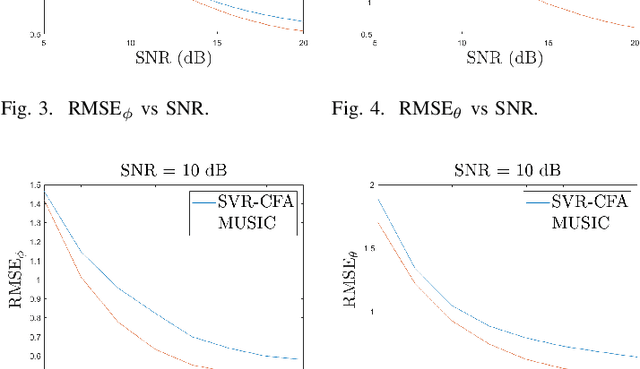
Abstract:Conventional direction of arrival (DOA) estimation algorithms suffer from performance degradation due to antenna pattern distortion and substantial computational complexity in real-time execution. The support vector regression (SVR) approach is a possible solution to overcome those limitations. In this work, we propose a sequential DOA estimation technique that combines the reduced dimension SVR (for the azimuthal plane) with a closed form approach (for the elevation plane). Thus, the training and testing are only required for the azimuthal angles which makes it very attractive from the implementation complexity point of view. Our analysis demonstrates that the proposed algorithm offers significant complexity gain over the popular MUSIC algorithm while exhibiting similar root-mean-square error performance.
Rectangular Planar vs Concentric Circular Array for 5G Beamforming
Aug 02, 2021



Abstract:Due to the use of the millimeter-wave (mmWave) frequency, the transmitter signals in the fifth generation (5G) wireless networks suffer from significant path loss. Therefore, beamforming is an essential and powerful tool in 5G to enhance signal from the desired direction and suppress interferences from other directions. For a given number of antenna elements, the geometry of the array dictates its beam pattern. Most of the works in the existing literature address the use of rectangular planar antenna (RPA) arrays for 5G beamforming. In this work, we demonstrate that a concentric circular antenna (CCA) array is capable of generating a significantly narrower beam than an RPA array while operating with a notably lesser number of antenna elements on a considerably smaller area. This capability of the CCA array is exploited and utilized in enhancing the performance of a 5G network in both the link and the system levels.
 Add to Chrome
Add to Chrome Add to Firefox
Add to Firefox Add to Edge
Add to Edge